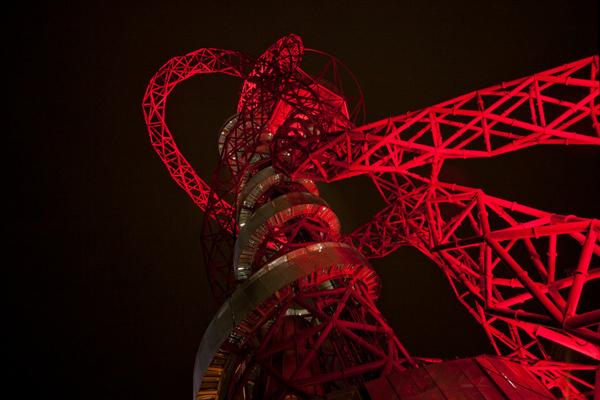
Indesign's Lighting editor, André Tammes, reports on a recent address in Sydney by one of the world's preeminent lighting designers, Florence Lam.
Florence Lam is the Global Lighting Practice Leader within Arup, a multi-disciplinary design and engineering group which operates in 38 countries. The fact that she heads up a 70 strong team of lighting designers is a mark of both Arup’s awareness that lighting is very much a cross-discipline subject and the reality that architectural lighting design is increasingly ‘coming of age’.
Story continues below advertisement
Florence started her exceptionally engaging talk by noting that, when she refers to lighting as a design subject, she does not limit this to electric lighting but very definitely includes natural light as a design tool. This holistic approach to the use of light, regardless of source, permeated her talk.
Story continues below advertisement
Olympic Aquatic Centre, London
She laid out her agenda by providing an all embracing ‘8 Characters of Light’:
Story continues below advertisement
Florence chose two case studies to illustrate these lighting characters: the Aquatic Centre by architect Zaha Hadid and the ArcelorMittal Orbit, the UK’s tallest sculpture and centrepiece of the Olympic Park, designed by Anish Kapoor and Cecil Balmond.
ArcelorMittal Orbit, London
The first of these necessitated a gruelling, engineering lead, analysis of the roof design, TV lighting requirements, the need for glare and reflection control for both swimmers and audience and minimal intervention of visible lighting hardware within the roof, coupled with the admission of as much natural light as possible. The description of the process of satisfying the architectural, functional and visual requirements was almost painful to listen to – the perseverance and tenacity which is so frequently called for if a lighting design ideal is to be realised was superbly illustrated.
Olympic Aquatic Centre, London
The ArcelorMittal Orbit project was very different; the structure already existed when Florence became involved. There was initially no budget for lighting….! Boris Johnson, London’s mayor, fixed that problem and called for lighting which would ‘wow’ the world and which is also sustainable, environmentally responsible and does not create glare for visitors on the observation deck located at the top of the structure.
New Acropolis Museum, Athens
The end result, after full scale demonstration and computer modelling, is lighting which suggests the swirl of electrons up and around the sinuous form of the sculpture, with intensification at its tighter curves. 254 lighting fixtures are controlled to provide three programmed lighting scenes with minimal light spill to the surrounding ecologically sensitive environment.
New Acropolis Museum, Athens
Florence’s final observation was “passion creates support” – perhaps this should become the mantra for all lighting designers…?
Arup
Hero Image: ArcelorMittal Orbit, London